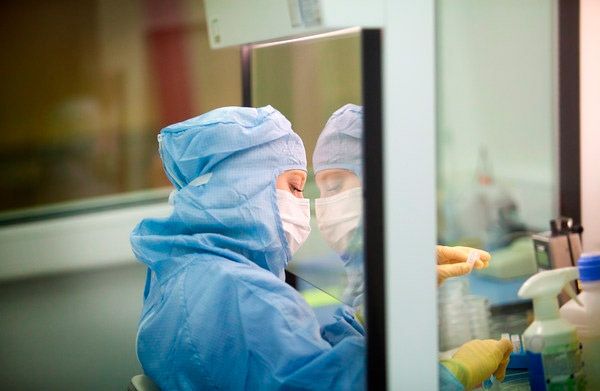New publications
An artificial heart has been grown in the United States
Last reviewed: 02.07.2025

All iLive content is medically reviewed or fact checked to ensure as much factual accuracy as possible.
We have strict sourcing guidelines and only link to reputable media sites, academic research institutions and, whenever possible, medically peer reviewed studies. Note that the numbers in parentheses ([1], [2], etc.) are clickable links to these studies.
If you feel that any of our content is inaccurate, out-of-date, or otherwise questionable, please select it and press Ctrl + Enter.
At the California State University, researchers have grown a human heart in a laboratory setting.
According to the experts, they first applied a nutrient medium and heart cells to the bottom of a special dish, then covered them with pluripotent stem cells taken from adult human skin, and then the specialists added signal proteins. The scientists noted that the heart's base was in the formation stage for about two weeks, after which the process of developing the heart chambers began (it is reportedly at this stage that any pathologies can be noticed). As a result, the researchers formed a fully functioning human heart, albeit much smaller in size.
The human heart consists of various tissues and cells, and by using the latest technologies and stem cells, scientists have managed not only to grow but also to form a fully functioning small heart in the right order. In essence, the process that scientists recreated in the laboratory occurs at the stage of embryo formation in the mother's body.
One of the specialists involved in the project noted that today such artificially grown organs are difficult to use for transplantation to humans, but they are quite suitable for testing new drugs that can pose a danger not only to health but also to human life. For example, the sleeping pill Thalidomide, which at one time led to the disability and even death of ten thousand newborns. In the middle of the last century, this drug was actively prescribed by gynecologists to pregnant women who suffered from mild insomnia.
Recently, this drug was tested on an artificially grown heart and scientists found that Thalidomide has a negative effect on heart tissue.
Perhaps, thanks to the emergence of such artificial organs, specialists will be able to test new drugs, which will help avoid many deaths and disabilities.
The experts plan to continue working in this direction and want to study in more detail the capabilities of the technology they have developed.

It is worth noting that the small human heart was not the first artificial organ that scientists have grown. Recently, a rodent limb was grown in the laboratory, which, according to experts, can be used for transplantation, but before this becomes possible, a number of studies will be required.
Several years ago, researchers from Japan already used stem cell technology and grew a human heart in the laboratory. At that time, the scientific group was headed by Konstantin Agladze, a processor at the Moscow Institute of Physics and Technology.
The research project took place in Kyoto, at one of Japan's national universities. The heart turned out to be so small that it could only be seen under a microscope, but despite this, scientists tested new drugs on the organ. In addition to the heart, Japanese geneticists were also able to grow teeth that are almost indistinguishable from real ones. In this case, they also used stem cell technologies, and the teeth grow directly in the patient's mouth.
Almost all experts agree that the future of transplantation lies in stem cells; organs grown from such cells are ideal for transplantation.

 [
[